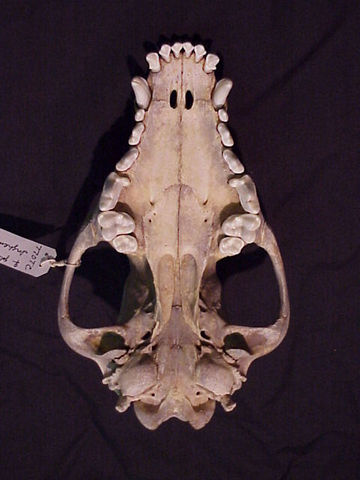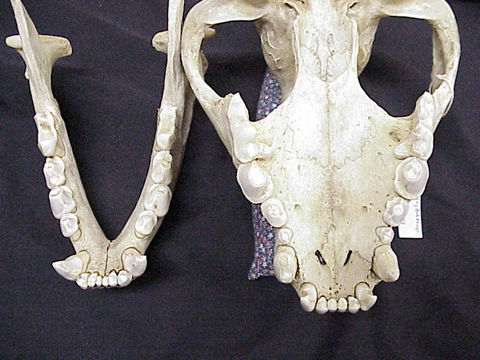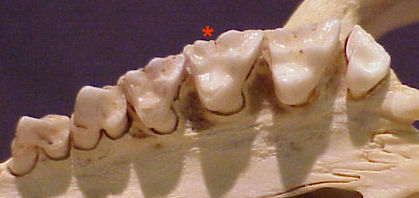Zoology 365
Biology of Mammals

Spring Semester, 2006
Terri McElhinny- Michigan State University
| Zoology 365 |
Biology of Mammals |
 |
||||||||
Spring Semester, 2006 |
Terri McElhinny- Michigan State University |
|||||||||
To go back to the main review page, click here.
One of the most important things that we covered during this week's lab was how to construct a dichotomous key. You can practice making dichotomous keys by going to the Aberdeen University Virtual Museum of Taxonomy. When you get to the main page, click on the door on the right, and look for the exercise on making dichotomous keys.
Some other helpful links for this week's lab are:
Animal Diversity Web: the structure of individual teeth
Animal Diversity Web: the diversity of cheek teeth
Animal Diversity Web: the structure of cheek teeth
Still confused about the paroccipital and mastoid processes? Check out this diagram.
1. Identify the bones of the skull in the dog (Canis), and the types of teeth (molars, premolars, etc) using the images below.



2. Which teeth make up the carnassial pair in the Carnivora?
3. What are the differences between premolars and molars?
4. Which teeeth are rooted in the premaxilla? In the maxilla?
5. Give the dental formula of this skull.

6. Identify the cusps of the tooth indicated below (upper tribosphenic molar). Anterior is to the left.

7. Identify the cusps of the tooth indicated below (lower tribosphenic molar). Anterior is to the left.

8. Match the cusp patterns to the diet types below.
| dilambdodont | (a) insectivore |
| zalambdodont | (b) carnivore |
| bunodont | (c) browsing herbivore (like a deer or goat) |
| selenodont | (d) grazing herbivore (like a horse or tapir) |
| secodont | (e) omnivore (like you) |
| lophodont |
For the answers to this review, click here.
To go back to the main review page, click here.